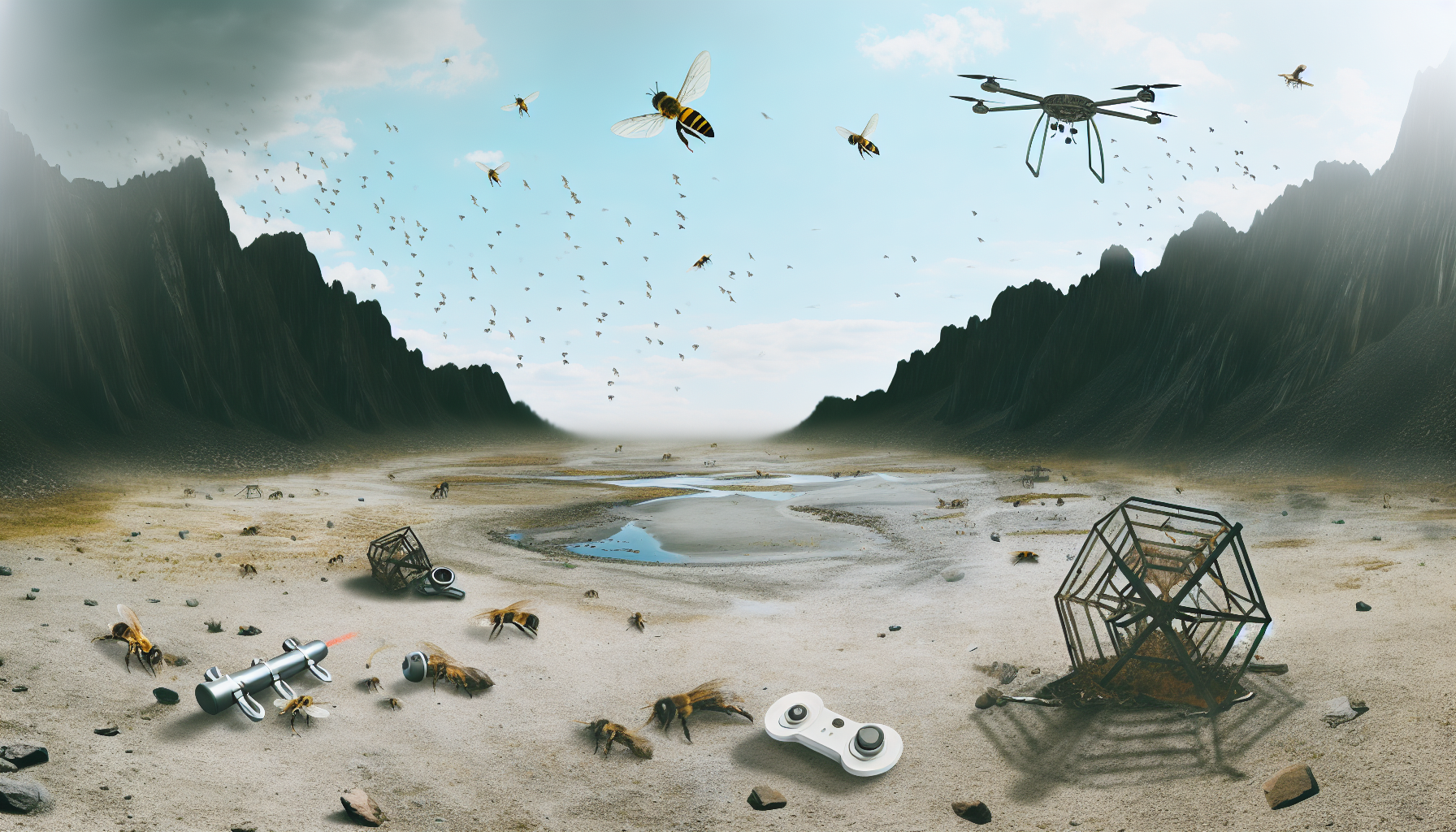The twilight of Earth’s biodiversity casts long shadows over the remnants of a world that once teemed with the flutter of a billion wings. Today, our skies are silent, our flowers remain unpollinated, and the dire consequences of this grave loss unfold like the withered petals of humanity’s future. In a continuation of our stark exploration of a planet in distress, we delve deeper into the cataclysmic void left in the wake of our last pollinators’ disappearance.
Years ago, we feared the decline of the bees, butterflies, and other pollinators. We foresaw the peril but, wrapped in the hubris of technological salvation, we did not act. Now, in this grim new existence, the intricate ecological tapestries that sustained our world have unraveled. The Last Pollinator’s Flight, a solemn narrative not far from our reality, illustrates the collapse of global food systems, the rise of artificial sustenance, and the sheer scale of a disaster foretold.
Imagine fields of crops, sprawling below an azure canvas, devoid of nature’s aerial artisans. The gentle hum of bees has been replaced by the mechanical drone of synthetic mimics—our fruitless efforts to imitate Mother Nature’s delicate brushstrokes. These automatons roam amid the desolation, a testament to the folly of man’s attempt to replace the irreplaceable. We must question, was it too little, too late, or was disaster our only destiny?
Without the dutiful diligence of our winged partners, plants and flowers wither in silent despair. Their vibrant hues now fade into a monochromatic grey, stripping the canvas of life’s diversity. The cascading effect sees the crash of herbivorous species, then carnivores, until what remains are hollow echoes where life once sang. Diet standards have crumbled, and human vitality has stumbled in the face of synthetic sustenance and its unnerving insufficiency.
What have we lost in this world without wings? The sweetness of spring’s first fruit, the vibrant tapestries of blooming meadows, and the equilibrium that once held our ecosystems together. An entropic spiral now engulfs societal structures, leaving behind the ruins of a civilization too arrogant in its prime.
In cold laboratories, scientists toil diligently for a breakthrough. Yet, every artificial pollinator they create remains a caricature of natural perfection, unable to truly embody the complex soul of a bee or the gentle touch of a butterfly. Their mechanical bodies lack the warmth of life, and their preprogrammed paths miss the chaotic beauty of natural serendipity. It’s a race against the inevitable, with stakes too high, and odds too daunting.
To envisage a world robbed of such essential creatures is to understand the brutality of nature’s response to human indifference. The flight of the last pollinator serves not only as an elegy to what has been lost, but also as a grim reflection of the resistance to change that marked human kind’s feeble stewardship of this world.
As we confront the barren expanses that were once our sanctuaries, we come to terms with the stark reality before us. There is no turning back time, no way to rekindle the silent symphony of wings. We live with the repercussions of our choices, and mourn the beauty that once was Earth’s. In this horizon devoid of buds and blooms, we find not only the tomb of the pollinators but also the quiet grave of human legacy.
The Last Pollinator’s Flight notes not just the end of an era but a solemn wake for the living planet itself. It echoes the unsettling conclusion of humanity’s grand tale—a tale in which we authored our own unmerciful end. Still, these words serve as a vestige, a grim narrative beacon, within which may lie the uncomfortable yet critical reflection needed for comprehension and, dare one say, learning, even when redemption is beyond reach.
